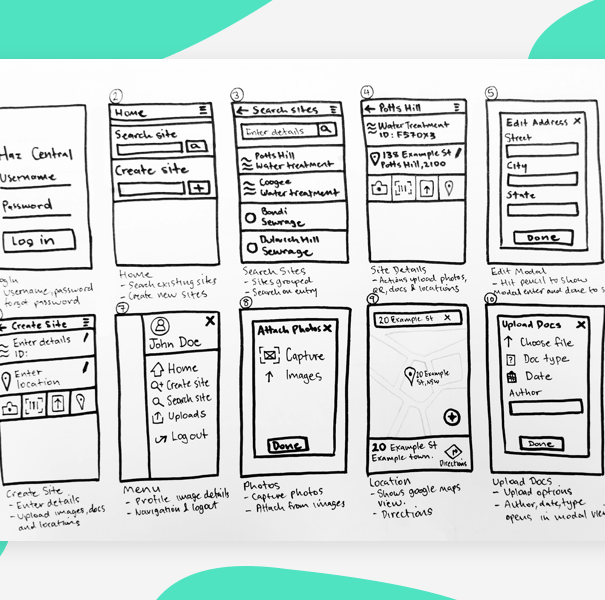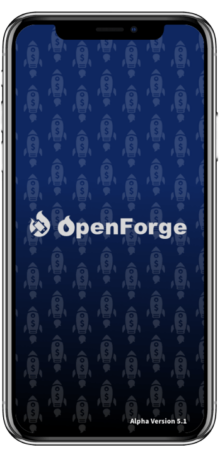There are different reasons for starting a business or founding a startup; you might want the freedom and independence that come with it, or maybe you’ve had an idea that won’t stop nagging you, and you just know that it will be a solution to a problem that many people face. Whatever the motivation, you’ll need to prove the idea’s efficacy (especially if you’re looking to raise funds!). So, what’s the best way to show stakeholders that your startup is worth backing and your idea is a winner? Start by building out your MVP (Minimum Viable Product).
Jedidiah Weller has developed a workshop entitled “A Startup Guide to MVP Apps”; it’s a presentation on the topic of how to start a technology based startup company for non-technical founders; followed by a series of exercises to explain how to best do that. This article will provide some of the resources used in the workshop; which are meant to be handled as “Homework” assignments.
What is a Minimum Viable Product (MVP)?
You can think of a Minimum Viable Product as a Proof of Concept of sorts; you produce an actual product (in this case, a mobile app) that has enough functionality (features) to attract customers and validate the idea. You would release an MVP in order to test an idea with real, actual users – you would learn what these users want from an app and how they would use it. An MVP is the fastest and least expensive way to prove your idea’s validity and will help ease the fundraising process.
A key component of producing an MVP is to learn during the product development phase; keeping in mind that the end goal is to improve the app. Effectively gathering and analyzing user feedback here is a vital part of this stage, you essentially want to find out whether or not customers are actually willing to download and use the app. If you gather enough users, you’ll want to observe their behavior; how are they using the app? Are they using the features you thought they would? Do they think there’s something missing from it?
Building an MVP
So, how would you build out an MVP? One of the most challenging aspects of this lies in the key word minimum; as an aspiring entrepreneur, I’m sure your head is reeling with all the endless possibilities and exciting ideas for your app. The trick here is to strip it down to its most basic, functional pieces – what is the single-most useful feature of your app? What would set you apart from competitors and similar existing apps / companies? That is your Unique Value Proposition.
Exercise One: The LEAN Canvas
Let’s take a step back for a minute – did you write out your business plan? Do you know your customers and competitors? How will you be making a profit from an app; will it be ad-spend, or subscription-based? A business plan might seem intimidating at first glance, but here’s a trick we like to use – fill out a LEAN Canvas instead! You can get a copy of OpenForge’s LEAN Canvas here. Once you have the LEAN Canvas in front of you, start filling out the slots; follow the sequence (numbers listed) and avoid the temptation of adding more pages – everything about your MVP needs to fit on that single page.
Pro Tip: Use bullets and do not give in to the temptation to create more pages to fit your content. Focus on keeping the messaging as simple as possible.
Some prompts to help you better answer the sections:
Problem: What’s the problem you’re trying to solve with the app? Don’t list the features of the app here. For example, a company such as Airbnb might have listed “hotels are too expensive” as part of the problem they’re trying to solve.
Be sure to list out any competitors here! We recommend listing at least 3 if possible (more about this in the second exercise!). If your app is a completely new, first of its kind – list out alternatives (Example: a taxi, bus or train would be an alternative to Uber)
Customer Segments: Who are your customers? Simple enough; who are you targeting, who will be using your app?
Unique Value Proposition: We mentioned this earlier, this is what sets you apart, and makes your app unique.
There’s a subsection for “High Level Concept” here; this is my personal favourite part of the LEAN Canvas! Think of this as your “elevator pitch”; if you had to describe your app in layman’s terms so that any person you meet could understand the concept – how would you describe it? Best way to do so would be to compare it to a well-known brand; example: “It’s the Uber of House Cleaning Services”.
Solution: This is where you would describe the high-level features of the app.
Channels: Answer this by thinking about how you’ll reach your target audience; will it be through social media? Do you already have a list of contacts which you send newsletters to?
Revenue Streams: Consider how you will monetize using the app; will it be subscription-based? Will the app follow a freemium model? What is your short and long-term monetization strategy?
Cost Structure: This might be a bit more on the technical side so we’ve taken the liberty to fill out some possible considerations for you!
Key Metrics: How would you measure success? Is it the number of downloads only, or would the average duration of a session be more telling? There are many metrics you can track; but the significance of them will depend on the app itself.
Unfair Advantage: This might be confusing when compared to “Unique Value Proposition”, but one way to distinguish between them would be to answer the question “Why will you succeed where others failed?” to this section.
Exercise Two: Feature Pyramid
The Feature Pyramid is a neat little trick we use in order to prioritize the work and help you figure out what features to include in an MVP. Here’s a short video (no, really, it’s under 5 minutes!) that shows our CEO, Jedi Weller, explaining how to utilize this mighty exercise!
Exercise Three: Competitor Analysis
Now that you’ve filled out the LEAN Canvas, you should have a list of competitors, or alternative solutions, to your app. Once you have that list, answer the following questions:
What do you like about each competitor / alternative?
What do you not like about each of the competitors?
What features does the competitor or alternative share with your application?
What feature does your application have that is missing from the competitors’ app?
Exercise Four: User Flow / Wire Framing
Simply put, a wire frame is a black and white high-level overview of your application. It is not designed or coloured, it is simply a mock-up to show the main screens of the app, and how it would flow. For this exercise, get out a piece of paper and draw out the main features of the app and how they would function and connect together. Start with the login/registration screen and use numbers and arrows to indicate the flow (i.e: how the user would navigate from one screen / feature to another).

Resources
Check out additional resources for founders:
That's It!
We look forward to seeing you during your workshop. If you have any questions in the meantime, please reach out to @jedihacks or @openforgemobile on Twitter.
~OpenForge Team


